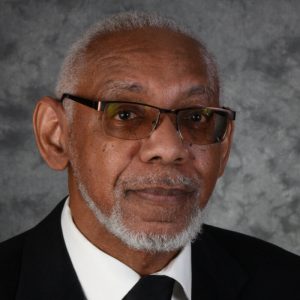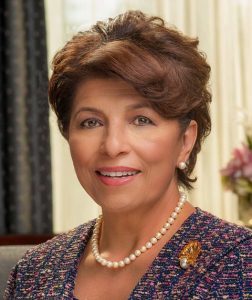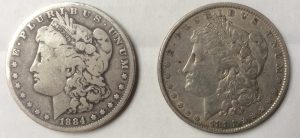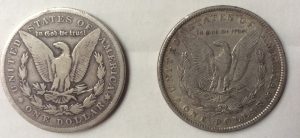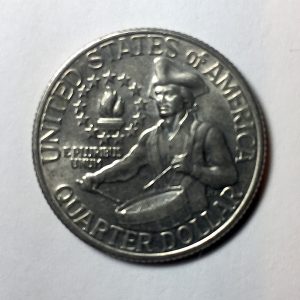The Polls Are Closed and the winner is…
The rest of the Board of Governors will consist of:
- Mary Lynn Garrett
- Clifford Mishler
- Shanna Schmidt
- Michael Ellis
- Rob Oberth
- Charles Morgan
- Mark Lighterman
Although this was not my choice for leadership, I will support them for their two-year term. The President, Vice President, and the Board of Governors deserve the support of the entire membership regardless of what you thought about the election.
In responding to the last election, I wrote, “The ANA is at a critical juncture in its modern history. There is a societal change happening that is affecting many hobbies and traditional institutions.” Rather than the situation getting better, it has only heightened the urgency.
The reaction to the pandemic showed that the ANA is an organization bogged down by people with old ideas and very little creativity when it comes to adapting to the changing culture. The ANA and its Board of Governors were dragged kicking and screaming into the 21st century to survive and not because they wanted growth.
At the time, the ANA looked clueless because the leadership of the Board of Governors was clueless. When they took the reigns off the people at the ANA headquarters, it was evident that they were working in the Association’s best interest despite the Board’s dysfunction. While the people at the headquarters were helping the ANA to survive while working from home, the Board seemed lost.
As I said two years ago, the status quo is no longer acceptable. Zoom is yesterday’s technology and not something to use to build a future. There are better technologies that have emerged from the pandemic that the ANA can use to expand its outreach.
In addition to the technology, the ANA must become a leader in consumer protection for the hobby. For the last year, the number of Chinese counterfeits has increased. Scammers are using new tactics to fool buyers into thinking they are getting a deal on silver coins. Rather than help the public, the ANA has been silent.
The ANA must be the organization to lead the effort against these counterfeits. They can partner with National Coin & Bullion Association (formerly ICTA) and the Professional Numismatic Guild (PNG) to create a nationwide anti-counterfeit education program. A plan can be formulated by the fall, with a national education program occurring shortly after.
President-elect Ross made his platform about education. Here is the first idea to make an educational impact for the ANA.
Overall, 19,027 ANA members were eligible to vote in this election. That is down from 19,737 in 2019. There were 5,560 votes cast, representing 29.22 of the eligible voters. That is down from 31.06 percent in 2019.
Fewer members and fewer voters are just one legacy of this past Board of Governors. If the ANA does not find ways to better engage with members and draw in new members, these numbers will be reduced in 2023.
If members have ideas that could help the ANA, let them know what you think. As a member, your input carries weight, and you should be able to participate. When you do write, please keep it respectful and include your membership number.
It is your ANA. Your ANA needs your input. Support the new Board and help them find their direction.
Note About the Makeup of the Board
Following the announcement, there were two persistent comments appearing in my Inbox about the demographics of the Board of Governors. I am very disturbed by the comments.
I do not subscribe to the idea that a person is not qualified for the job because of demographic characteristics. I never have. This is not because I am “woke,” but this is how I have been for as long as I can remember.
I will not respond well to a statement like, “I don’t like this person because…” and insert some ridiculous demographic reason. Let us all get along and work together to make the ANA better.
Jovita Carranza nominated to be Treasurer
The following biographical note was released by the White House:
When confirmed Carranza will be the 44th Treasurer of the United States succeeding Rosie Rios who resigned on July 8, 2016.
Since the Series 2017 notes will carry Carranza and Secretary of the Treasury Steven T. Mnuchin’s signature, here is a view of what you might expect:
Rather ordinary considering the fun we had discussion Jack Lew’s Lewpts!
Modern US Coinage needs more love from collectors
The 1884 dollar was in good (G-4) condition with a rim ding while the 1881 coin could pass for an extra fine (XF). When the person behind the cases said that she would sell the coins for $20 each, I added them to growing list of items I was buying. JJ was jealous.
JJ considers himself a hoarder and collector. He likes to find Morgan dollars and hoards them. During our conversation, he said that he hoards all pre-1965 coins regardless of type and condition. As a result, we ended up discussing collecting “modern” versus “classic” coins.
JJ and I are about the same age. We grew up with clad coinage but continued to find silver coins in pocket change until the early 1970s. We filled blue folders from the pocket change we were able to find in our father’s pockets and we have our respective first folders of Lincoln cents. Even though the modern era has been going on for 53 years, there are a lot of people like JJ who gives these coins little to no respect.
There are very few rare coins to be found in circulation. Gone are the days when the 1914-D, 1922 no D, and the 1955 “Spoiled” Lincoln cents were circulation finds. Even with the conflicts around the world, there are no shortages or special production coins that caused the rarities of the 1921 half-dollars, especially since half dollars rarely circulate. Aside from being a sign of how the U.S. Mint has improved its processes, it is also a function of the better economy where there is a need to produce billions of coins every year. We do not want that situation to change!During the first few years of the blog, I had provided extensive coverage and review of the State Quarters series. At the time, it was a novel idea that involved everyone as the states held competitions to decide how they will be represented forever. Some designs were really special and showed off the historical importance of their state. Others had great designs. Then there were those that were so ugly one could be excused if they were removed from their collections. The problem is that the state quarters were not rare (Philadelphia produced over 1 billion Virginia quarters in 1999) and the hucksters inflated their future value, especially on the television shopping networks turning people off to the hobby.
I have not said much about the America the Beautiful Quarter series. There seems to be a lack of interest in a lot of places. Collectors have shown a fatigue in yet another series and the public has not been involved with the designs as they were with the state quarters. In fact, the U.S. Mint, National Park Service and U.S. Forestry Service worked together to make the decision as to what National Parks or National Forests to feature without involving the public.
Of course, when you do not involve the public you get the infighting between the Citizens Coinage Advisory Committee and U.S. Commission of Fine Arts regarding the design. We see the dance between the two as just annoying while the public sees more government bureaucracy causing problems.
It is possible that the dealers have been talking down modern United States coinage because of their business concerns. However, there are companies that are now making a good living fulfilling the needs of collectors putting together sets and selling non-circulating legal tender (NCLT) coins. While I think some of the coins are gimmicks, these companies are doing well selling the colored and other coins from the Royal Canadian Mint, Royal Australian Mint, and the countries that have had the New Zealand Mint produce their coins.
Just because I do not like those coins does not diminish their value as numismatic collectibles. Even though I will not collect many of these coins, there is nothing wrong with those who do. Maybe if the hobby stops disparaging modern and these alternative types of NCLT coinage it will inspire more collectors to use them as a gateway into the hobby. It would not hurt to try!
POLL: Do you collect modern U.S. coins?
The modern era of United States coins begins in 1965 when silver was removed from circulating coins except for the Kennedy half-dollar. The silver content of the half-dollar was reduced to 40-percent and clad around a copper core while the dime and quarter were copper-nickel clad, as they are today. It would not be until 1982 when the cent was changed from being 95-percent copper to being copper-plated zinc coins. The nickel has used the same copper-nickel composition since the release of the 1883 Liberty Head nickel except for the World War II issues.
For the average collector under 40 years old, coins have always been copper-nickel clad and the cent has always been made from copper-plated zinc. For a significant amount of their lives, the reverse of the Lincoln cent always had the Lincoln Memorial and the reverses of the quarter have been changing ever since they can remember. While many of us grew up with single designs, those of us who were around for the Bicentennial will remember the special reverses produced for the quarters, half-dollars, and dollar coins. In fact, the Drummer Boy reverse of the dual-dated 1776-1976 quarters remains my all-time favorite circulating commemorative reverse.
Maybe it is time to give modern coins more respect. What do you think?
SCOTUS Cops Out
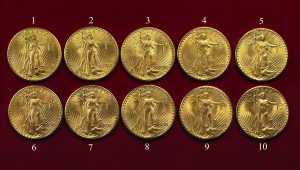
The ten 1933 Saint-Gaudens Double Eagles confiscated by the government from Joan Lanbord, daughter of Israel Switt.
Shortly after the sale of the Farouk-Fenton 1933 Saint-Gaudens Double Eagle coin, currently the example that is legal to own, in 2002 for $7.59 million at auction ($10.23 million accounting for inflation), Joan Langbord, daughter of Israel Switt, was searching through her late father’s boxes and found ten of these coins. Langbord then sent the coins to the U.S. Mint to authenticate. After a period of time, the Langbords inquired about the coins. They were told the coins were genuine and would not return them, calling them stolen items.
Langbord and her son Roy Langbord hired Barry Berke to help retrieve the coins. Berke was the attorney for British coin dealer Stephen Fenton who was arrested by the U.S. Secret Service when trying to buy the coin at the famous Waldorf-Astoria Hotel in New York in 1996. Berke negotiated Fenton’s release from prison and the subsequent sale at the July 2002 auction.
After the U.S. Mint refused to return the coins, the Langbords sued the government in 2006. The case went to trial in 2011 with a jury verdict against the Langbords. After the ruling, Assistant U.S. Attorney Jacqueline Romero, the government’s lead attorney in the case, came out with a courthouse statement, “People of the United States of America have been vindicated.” Do you feel vindicated?
The case was appealed to the U.S. Court of Appeals for the Third Circuit in Philadelphia.
In a hearing in 2015, Judge Marjorie O. Rendell ruled that the government was too aggressive in its actions and that the lower court judge erred in evidence handling. A subsequent three-judge panel upheld Judge Rendell’s ruling and ordered the government to return the coins.
The government appealed the ruling and asked for a full-circuit hearing. Called a ruling en banc, in 2016, a full panel of 12 judges ruled 9-3 that they agreed the lower court made mistakes in the presentation of evidence but they did not feel that there was not enough evidence that could overturn the ruling. The Appellate Court overturned the appeals and reinstated the original verdict.
Berke, on behalf of the Langbords, asked the Supreme Court to review the ruling of the Third Circuit. Officially, it is called a petition for a writ of certiorari. The petition was filed on October 28, 2016.
On April 17, the petition was denied. Justice Neil Gorsuch did not take part in the decision since he was not on the bench at the time the petition was filed.
Attempts to contact Burke have not been successful.
The inconsistency of how the government has handled the many different cases of coins that were not supposed to be in public hands is infuriating. Although the government has a history of confiscating the 1933 Double Eagles, the 1913 Liberty Head Nickels remain out of government control while the 1974-D Aluminum Cent was confiscated, while the 1974 Aluminum Cent pattern that was allegedly given to janitor by a member of congress was allowed to be sold at auction.
Patterns were never supposed to leave the U.S. Mint yet after the William Woodin served as Franklin Roosevelt’s first Secretary of the Treasury, the government has not tried to confiscate patterns. Woodin was a collector of patterns and trial coins who also had Roosevelt exempt “rare and unusual coin types” when writing the order to withdraw gold from private hands.
Even if the Third Circuit agreed that the evidence was not handled properly by the lower-court judge under the terms of the law, how can they tell whether a retrial would yield a different outcome? Why not return the case and retry the case?
While I love reading a good conspiracy theory, I find many difficult to understand how all of the moving parts can work in unison for or against anything. However, there are aspects of this story where a good conspiracy theorist could spin quite a tale.
Saying, “there ought to be a law” is usually not the real answer to many problems. However, maybe it is time to reconsider that feeling to force the government to act consistently. Considering how congress has turned dysfunction into fine art, I do not see this ever happening.
Do you still feel vindicated?
How many foreign coins at the U.S. Mint
After adding the coins struck for Iceland as part of the 2000 Leif Ericsson commemorative program and the coins struck at the Manila Mint, it appears that the Mints of the United States have produced over 10.75 billion coins and sold nearly 650 million planchets to foreign countries. That is over 11.4 billion pieces produced by the U.S. Mint from 1875 through 2000 that were not intended to circulate in the United States.
The following table shows the number of coins produced for each country:
| Country | Number of pieces produced | Country | Number of pieces produced |
|---|---|---|---|
| Argentina (Blanks)1 | 64,058,334 | Hawaii2 | 1,950,000 |
| Australia | 168,000,000 | Honduras | 115,929,500 |
| Belgian Congo | 25,000,000 | Iceland | 143,324 |
| Belgium | 25,000,000 | Indo-China | 135,270,000 |
| Bolivia | 30,000,000 | Israel | 91,000 |
| Brazil (Blanks)1 | 406,249,266 | Korea | 295,000,000 |
| Canada | 85,170,000 | Liberia | 56,744,679 |
| China | 39,720,096 | Mexico | 91,076,840 |
| China, Republic Of (Taiwan) | 428,172,000 | Mexico (Blanks)1 | 175,714,411 |
| Colombia | 133,461,872 | Nepal | 195,608 |
| Costa Rica | 131,798,820 | Netherlands | 562,500,000 |
| Cuba | 496,559,888 | Netherlands East Indies | 1,716,368,000 |
| Curacao | 12,000,000 | Nicaragua | 26,080,000 |
| Dominican Republic | 76,954,297 | Panama (Republic) | 193,838,428 |
| Ecuador | 214,451,060 | Peru | 761,067,479 |
| El Salvador | 226,695,351 | Philippines3 | 3,690,543,252 |
| Ethiopia | 375,433,730 | Poland | 6,000,000 |
| Fiji | 4,800,000 | Saudi Arabia | 124,712,574 |
| France | 50,000,000 | Siam (Thailand) | 20,000,000 |
| Greenland | 100,000 | Surianam (Netherlands Guiana) | 21,195,000 |
| Guatemala | 7,835,000 | Syria | 7,350,000 |
| Haiti | 90,324,000 | Venezuela | 306,762,944 |
| Blanks (planchets) Coins TOTAL |
646,022,011 10,754,294,742 11,400,316,753 |
1 Listings marked “(Blanks)” were those countries who purchased blanks and not struck coins.
2 Coins produced prior to Hawaii becoming a state.
3 Includes coins struck at Manila Mint.
I expected to see the number of coins struck for the Philippines to be very high. What surprised me were the volume of coins struck for the Dutch East Indies. Combine that number with the total for the Netherlands, the U.S. Mint has struck over 2 billion coins for them.
Some of the countries on the list are interesting like striking coins for Cuba until 1960, two years into Fidel Castro’s reign. France was also a surprise until I looked at the data and noticed that the coins were struck in 1944, post World War II. In 1968 and 1969, the Philadelphia Mint struck over 85 million 10 cent coins for Canada. This must have been a capacity issue by the Royal Canadian Mint which I will investigate at another time.
- Image of the U.S. Mint struck Canadian 10-cent coins courtesy of Canadian Numismatist Daniel W. Gosling. See this page for more information on the 1968-69 Canadian 10-cent coins.
